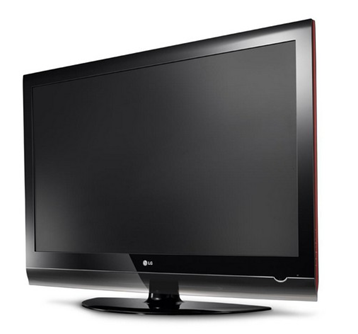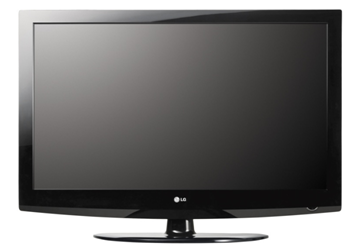Buying Guide for LCD/ Plasma/ LED TV
 Doesn’t all the LCD’s and Plasmas and LED’s looks identical at a store? However, the similarities tend to vanish once you look past the thin form factor and big screens. It is three different worlds in there. Plasma TVs use a sheet of miniscule individual plasma cells that creates picture when an electrical charge is applied whereas LCD televisions use liquid crystal compressed between two glass plates; an image is created when electricity is applied to these crystals. LED TVs which is an extension of LCD TVs uses the liquid crystals but unlike LCD TVs they use backlight made of hundred of LEDs and not a fluorescent lamp.
Doesn’t all the LCD’s and Plasmas and LED’s looks identical at a store? However, the similarities tend to vanish once you look past the thin form factor and big screens. It is three different worlds in there. Plasma TVs use a sheet of miniscule individual plasma cells that creates picture when an electrical charge is applied whereas LCD televisions use liquid crystal compressed between two glass plates; an image is created when electricity is applied to these crystals. LED TVs which is an extension of LCD TVs uses the liquid crystals but unlike LCD TVs they use backlight made of hundred of LEDs and not a fluorescent lamp.
Irrespective of the technology used, Blu-ray movie, an HDTV broadcast or a high-definition video game, the clarity of the picture depends on a television’s display technology and its image processing capabilities.
Following are some criteria which one should look out for before deciding on a particular TV.
1. Contrast Ratio
The contrast ratio of the televisions represents its ability to show detail in high contrast areas of the screen. For example, a panel with a low contrast ratio will struggle to show the higher or lower extremes of an image.
It is generally accepted that plasma televisions have better contrast ratios than LCD panels, due to the fact that a plasma television can completely deactivate the light source for individual segments of the screen. This means sections of the screen can be completely dark while others are displaying bright colour, unlike a traditional LCD screen which has a single backlight array that can only alter brightness levels for the entire screen.
The latest LED backlight technology allows the television to individually control backlight segments. This technology allows for contrast ratios similar to those produced by plasma television panels.
2. Viewing Angle:
The narrower a television’s quoted viewing angle is, the smaller the range in which it produces a ‘perfect’ image with no loss of contrast or color.
In general, plasmas have better viewing angles than LCD and LED TVs, with their images remaining solid and colorful at wide viewing angles while LCDs suffer from color shift and loss of brightness. This is not always the case, though, so it is best to compare panels directly against each other if possible. LED televisions have superior viewing angles compared to LCDs due to their decentralized backlight distribution
3. Color
It is important to note that plasma televisions can in theory produce brighter colors’ overall. LED-lit televisions using either a white or RGB LED backlight also offer a larger color gamut than traditional LCD screens, due to an improved brightness source. Color accuracy can be adjusted on almost all screens, whether you choose plasma, LED or LCD TV.
4. Motion
A plasma screen’s ability to refresh each individual cell at a much faster rate than an LCD pixel refresh means that plasma panels have an inherent advantage in displaying fast motion free of blur and jitter.
New LCD screens can now update the image displayed 100 times per second — the often touted ‘100Hz’ technology. The next generation of this technology doubles the refresh rate again to 200Hz but screens with this technology is not incorporated into all LCD TVs on the market.
5. Power
Most LCD televisions require a single fluorescent backlight to be lit. Plasma televisions, on the other hand, require every sub-pixel to be lit individually. When you compare screens of equal size plasma televisions consume more power than their LCD counterparts. A 42inch LCD consumes around 200 Watts in normal use while a plasma panel consumes approximately 300W. In a year of use this means the power bill for running plasma will be 50 per cent higher than an equivalent LCD panel. Also consider the power-saving features of individual models — power-reducing features may make a plasma screen just as affordable in the long term.
LED television screens offer significant power savings over both LCD and plasma televisions. Energy-efficient backlighting allows LED televisions to have energy consumption of up to 40 percent less than LCD televisions and significantly less than a plasma screen.
6. TV screen life span
In the past, plasma panels suffered from a short life-span before they lost significant amounts of brightness and image quality degraded. This has been overcome in recent plasma generations.
The lifespan of an LCD television depends on the life of its backlighting bulb. These bulbs are often rated to above 60,000 hours in regular fluorescent-lit LCD panels, whereas new LED-backlit televisions have expected lifespan of over 100,000 hours.
7. Price vs. Screen Size
More than any other determining factor, it is tempting to simply pick the cheaper of either a plasma or LCD television when considering any given size. For screen sizes below 42in, we believe LCD screens are your best bet — you can pick up a 37in LCD for under $1000 if you shop around and look for special offers.
If you are considering a large screen — 42in and above — as your home theatre centerpiece, be sure to check out plasma technology. Plasma panels do have the edge in terms of contrast and overall picture quality at these sizes, and are often cheaper than an equally-sized LCD counterpart.
LED televisions are generally available in similar sizes to LCD televisions, with larger screens also available in premium models. LED televisions generally command a price 20 per cent above that of an LCD television featuring an identical screen size and similar specifications.
 No matter what screen technology you select, make sure you test it against its competitors. The shops offering multiple panels set up next to each other are always great for the purpose. While the specifications of a TV and the screen technology employed are important buying considerations, it is advisable to not buy blind and physically confirm that the picture and other elements of the television are satisfactory.
No matter what screen technology you select, make sure you test it against its competitors. The shops offering multiple panels set up next to each other are always great for the purpose. While the specifications of a TV and the screen technology employed are important buying considerations, it is advisable to not buy blind and physically confirm that the picture and other elements of the television are satisfactory.
